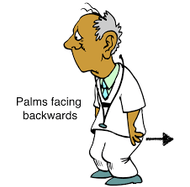Falling Forward with Age
Posted by DSDC on Apr 4th 2024
Everyone has noticed that some older people tend to bend forward and eventually need a cane or a walker. This is preventable just about every time (barring major spinal or hip injuries). It isn’t that difficult to manage a healthy posture with a little effort.
To jump to the conclusion: you will have to exercise a few times a week, especially for the upper body in a 3:1, back to front ratio. The following will be an explanation of why and how to do that.
Think About Brain Activation
I have explained this to my patients with a white board for many years but will try to duplicate that explanation here. Hang in there the best you can.
As you work out, I don’t want you thinking so much about strength but activation of brain and spinal cord pathways that help keep you upright. To say that another way, we are working on brain/body connections that every person needs.
If you do this right (and it isn’t hard), you won’t have to work at standing up straight. It will happen in a natural way without thinking about it too much.
As I explain this, I want you to have a picture in your mind of an infant on all fours and a toddler learning to be upright and learning to walk in a coordinated fashion.
Brain Inhibits Anterior Muscles
An important key to the upright posture is brain development and its inhibition of anterior muscles above the waist to allow activation of the posterior muscles. At first the anterior muscles above the waist, overwhelm the posterior groups keeping the baby on all fours. As the child learns to walk, pathways develop to coordinate movements so we gain a better balance between the anterior and posterior groups and also one arm swings back and the other forward. It is fun to watch a child run who hasn’t gotten to that stage of development yet. That cross-crawl pattern is coming along but not there yet.
The spinal cord neurons also help with this coordination process. When the area of the spinal cord that controls the anterior (front) muscles is stimulated, signals also are sent to inhibit the posterior muscles and vice versa. When you flex your biceps (an anterior muscle), for example, the triceps (a posterior muscle) are naturally inhibited and vice versa. This gives us the ability to move in a fluid fashion. The brain is involved in this activation-inhibition function which is why a person with cerebral palsy has trouble doing basic coordinated activities. When you walk, one arm swings forward and the other goes back.
Anterior Muscles Are Better Connected to the Brain
The anterior or front controlled muscles of the upper body are better connected to the brain than the upper body posterior muscles. This is one reason why we spend months learning to stand up because the brain has to learn to inhibit the anterior muscles so the posterior muscles can be activated. We spend those first several months mostly on all fours (once we get that far). Little by little the brain sends signals to the anterior muscles to quiet down so the posterior guys can do their job. Then finally we are upright with the anterior and posterior groups in a decent balance resulting good, upright posture.
As time goes on and the brain is winding down, the posterior groups begin to lose their connection with the brain faster than the loss of connection to the anterior groups and the balance between the anterior and posterior begins to favor the anterior again, just like when we were infants.
First, the Palms of the Hands Face Backwards
The first sign that this is happening is the position of the hands when you are standing in a relaxed pose. If all is in a good balance, your thumbs should be facing forward with your palms facing your body. As the anterior muscles begin to take over, the hands first turn so the palms are facing backwards with your thumbs facing your body.
Next your shoulders begin to slump forward and eventually your whole body is on the way to an infant position again. We stop that by adding in a walker but you get the idea.
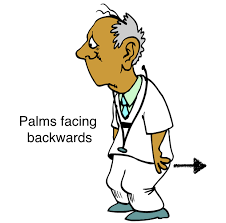
Keep Posterior Muscles Connected to Your Brain
A couple of details you need to know. The posterior muscles of the shoulder and upper back are the deltoids on back. Think: trapezius, deltoids, rhomboids, lats, triceps etc. These are muscles that are primary in raising the arms to the side or overhead or extending the arms or retracting the shoulder blades.
The anterior muscles of the shoulder are primarily the biceps and pectoralis (anterior chest) muscles.
Some Suggested Exercises
To exercise the posterior groups, I use overhead press, pull downs, rows and upright and bent over flies. I use some basic free weights for the overhead press and flies and surgical tubing attached to a wall for pull downs and rows. I used to do my exercise in a gym but switched to this home system about a decade ago. It is working great. I was also able to rehab a shoulder injury with this system.
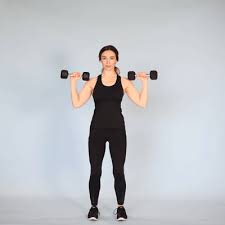

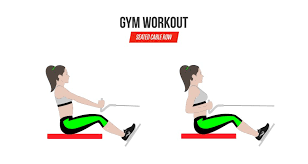
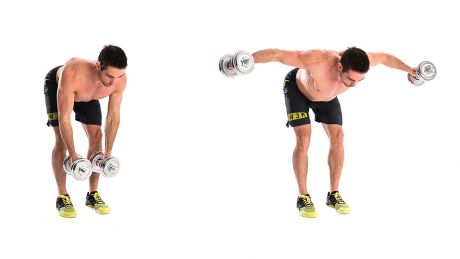
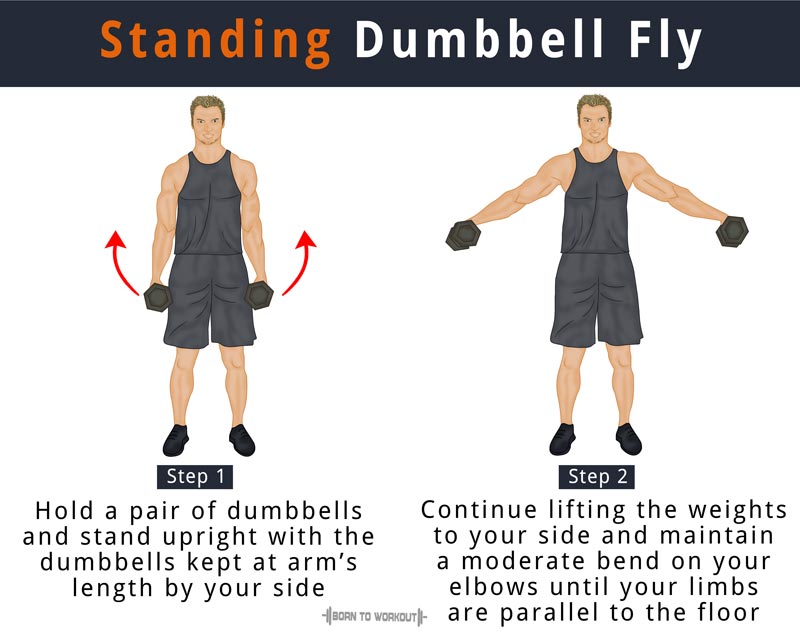
The anterior groups are easy…chest press and biceps curls. For chest press, I use the surgical tubing system and free weights for the curls.
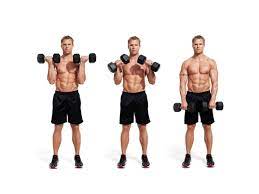
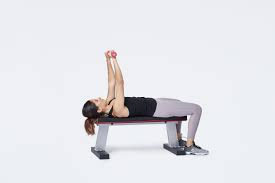
To achieve the 3:1 posterior to anterior, I will do the following: overhead press then pull downs. Then chest press and seated row. I have now done three posterior groups to one anterior. Next up are upright flies (lateral raise) with free weights then biceps curls. Next is seated bent over flies and wrist extensions.
You Do This With a Small Amount of Space
I do all of these at home with a little bit of space using a small dumbbell set and surgical tubing exercise kit. You should be able to pick the weights at a recycle sports store or maybe someplace like Target. I am using bands by Fit Simplify. Use this information as a starting point. I have also put a photo of the wall bracket I use. You can attach the bands in a lot of different ways. This works for me.
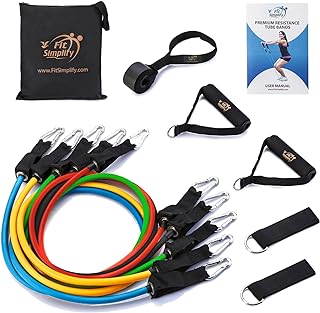

I should mention that if you do go to a gym, obviously you have a way to get all this done with various machines. You can also add in an upper body ergometer. This is like a bicycle for your arms. If you have access to one, be sure to push in a way that emphasizes the triceps and lats, that is pushing forward and down as the handle moves through the circle and not pulling.
If this seems complicated, in my postdoctoral studies, my instructor spent about a half a day explaining what I just wrote in a couple of pages. I like to boil things down to the most useful concepts. The theory doesn’t matter if you walk away without knowing how to apply it to your life.
This will take a little effort to get it set up and establish a routine. What is the alternative?
I should mention that we don't push a lot of muscle building supplements. Our primary mission is improved health and most people aren't into the muscle thing. Which supplements work best for you brain/body connection can be quite variable. I will recommend supplements in other more supplement topic specific blogs.
Written by a person.
2024
